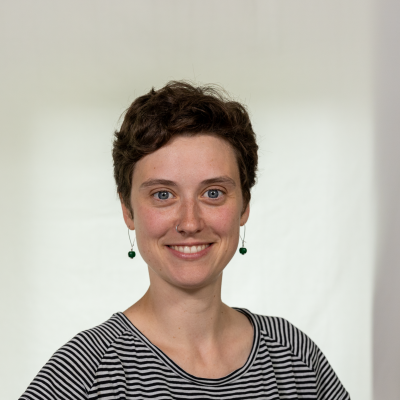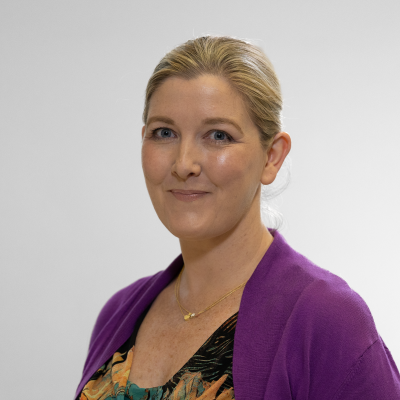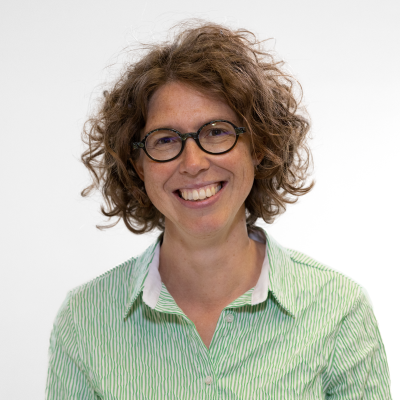All Means All: A Collective Vision for Inclusive Teacher Education – An Introduction
Frank J. Müller; Deirdre Forde; Lea Bussas; Leah O'Toole; Heidrun Demo; and Silver Cappello
What is the OpenTextbook and How Did We Get Here?
The “All Means All!” OpenTextbook represents a groundbreaking step in fostering inclusive, equitable, and intersectional approaches to teacher education. This interactive, modular, multimedia resource was created to address the complex needs of diverse learners and support educators in overcoming structural barriers in education. Conceived and developed over three years, this OpenTextbook brings together perspectives from 151 self-advocates/researchers from 28 countries, blending theory and lived experience to create a tool that empowers educators to better understand and navigate the multidimensional aspects of inclusivity.
This ambitious project would not have been possible without the contributions of its numerous participants, whose insights, lived experiences, and dedication enriched every aspect of this resource. We extend our deepest gratitude to all involved. Additionally, we would like to acknowledge the extensive funding provided by Erasmus+, which laid the foundation for bringing together diverse voices and enabling an inclusive dialogue. The collaborative spirit of this initiative underscores its mission to create meaningful change in education.
The Goal: Inclusive and Intersectional Education
The primary goal of the “All Means All!” project is to provide educators, especially students in initial teacher education (K-12), with a comprehensive, practical resource to promote equity and inclusivity in their classrooms. This OpenTextbook seeks to address and dismantle structural disadvantages based on gender, sexual orientation, dis/ability, socio-economic background, race, language, health, age, pregnancy and maternity, and belief systems. By integrating these dimensions into a cohesive and interconnected narrative, the project fosters a holistic approach that helps educators build empathy, dismantle systemic barriers, and empower all learners to reach their full potential.
The Process: Collaboration, Review, and Open Resources
The journey to create the “All Means All!” OpenTextbook was rooted in collaboration and inclusivity. Over the course of three years, the project unfolded through engagement with a wide network of advocates and researchers. Important aspects were:
- Open Review and Participatory Development: The development process was open and participatory, involving extensive collaboration with self-advocates and researchers. This ensured that lived experiences shaped the content, resulting in a resource that is both authentic and relevant to diverse educational contexts.
- Workshops in Brixen (2022), Maynooth (2023), and Göttingen (2024): Three two-week workshops served as key touchpoints for dialogue, co-creation, and exploration. Participants worked together to explore theoretical frameworks, share practical strategies, and weave their personal narratives into the content.
- Pressbooks Platform: Utilising the Pressbooks platform, the OpenTextbook was developed with accessibility and adaptability in mind. This modular format allows for easy integration into local contexts and promotes flexible, user-driven engagement.
You will find a more detailed description of the open process in the meta chapter.
Learnings from the Journey
Throughout the project, several key insights emerged:
- Value of Multi-Perspectives: Bringing together a wide range of voices and experiences highlighted the strength of the collective input and underscored the importance of multi-perspective content in educational resources.
- Complexity of Structural Barriers: The intersectional dimensions of diversity and structural disadvantage require nuanced understanding and context-specific strategies to enable them to be addressed effectively.
- Power of Collaboration: The collaborative model demonstrated the transformative potential of engaging both academic experts and self-advocates, resulting in a resource that bridges theoretical knowledge with lived realities.
Overview of Topics Covered
To provide a comprehensive resource for educators, the “All Means All!” OpenTextbook is organised into six primary sections, each addressing a key aspect of inclusive and intersectional education. Below is an outline of the major topics explored within each section:
Section 1: Developing Inclusive Educators
Developing Empathy for Diversity through a Narrative of Activism
The opening chapter, Developing Empathy for Diversity through a Narrative of Activism (by Paty Paliokosta and Nicola Ryan—with special acknowledgments to Elizabeth Morrow, Theresa Nash-Patel, Kingston Centre for Independent Living, Bern O’Donoghue, and Eli Anderson), invites readers to discover the transformative power of empathy in education. Drawing on compelling narratives (for example, the experiences of disability rights advocate Ali Kashmiri), the chapter illustrates how storytelling dissolves barriers and cultivates inclusive learning environments. Educators are encouraged to reflect on real-world cases, challenge systemic injustices, and build a pedagogy founded on empathy and social justice. This chapter lays the groundwork for engaging with stories of resilience and advocacy while inspiring tangible change in classrooms.
The Role of Values in Inclusive Education
The Role of Values in Inclusive Education (by Petra Auer, Lydia Murphy, Tommaso Santilli, and Mahvand Sahranavard Espily) investigates the critical connection between core values and the development of inclusive settings. Using diverse examples, theoretical models, and practical applications, this chapter reveals how values shape individual behaviors and overall school culture. Through relatable narratives and case studies—such as educators rethinking conflicting priorities—it emphasizes the significance of values in guiding decision-making and influencing educational practices. Readers are prompted to reconsider their own beliefs and collaborate in fostering environments where every student is respected.
Relationships in Inclusive Education
Authored by Lina Render de Barros, Leah O’Toole, and Simon Klippert, the chapter Relationships in Inclusive Education underscores the importance of interpersonal connections in nurturing inclusive settings. By linking individual developmental needs with broader societal contexts, the chapter demonstrates how these relationships influence human growth and classroom dynamics. It offers both theoretical perspectives and practical strategies for educators to build nurturing, equitable, and responsive student-teacher interactions.
Dialogic Mentoring
Dialogic Mentoring (by Dror Simri, Ines Boban, and Linjie Zhang) focuses on the mentor–mentee dynamic, emphasizing how trust, empathy, and mutual respect foster transformative learning. Drawing from historical and philosophical insights—and using vivid metaphors such as anthropologists and photographers—the chapter illustrates the multifaceted nature of mentorship. It interweaves practical strategies that stress authenticity, emotional support, and collaborative dialogue, inviting educators and mentors to reframe their practices in ways that honor individuality while promoting inclusive, dialogic learning environments.
Continuous Professional Development for Diversity Sensitivity
In Continuous Professional Development for Staff for Diversity Sensitivity (by Fetiye Erbil, Bodine Romijn, and Valeria Occelli), the focus is on the vital role of ongoing professional development in cultivating diversity-sensitive practices. Using a detailed hypothetical case involving Alex—a middle school student facing intersecting challenges—the chapter challenges educators to critically reflect on their own approaches. It argues for prioritizing equity over equality and advocates for professional growth that is tailored, collaborative, and reflective, offering actionable strategies for creating supportive, inclusive classrooms.
Understanding Yourself as an Inclusive Teacher – Teacher Professional Identity Development
Understanding Yourself as an Inclusive Teacher – Teacher Professional Identity Development (by Ann-Kathrin Arndt, Beausetha J. Bruwer, Zhicheng Huang, and Sarah Volknant) explores the intricate journey of forming a teacher’s professional identity. Examining Teacher Professional Identity Development (TPID) as a dynamic process shaped by personal experiences, educational settings, and societal shifts, the chapter combines theoretical insights with reflective exercises. It encourages educators to align their values and practices in pursuit of inclusivity and to adapt to evolving educational and technological landscapes.
Reflecting on Teacher Habitus – The Potential to Support Inclusion in the Classroom
In Reflecting on Teacher Habitus – The Potential to Support Inclusion in the Classroom (by Nico Leonhardt, Rosario Ryan, and Valerio Ferrero), the concept of teacher habitus—rooted in Bourdieu’s sociological framework—is discussed as a key influence on teaching practices. Drawing on examples from Ireland, Italy, and Germany, the chapter highlights how ingrained norms and socialization can either reinforce inequalities or promote inclusion. It emphasizes reflective practices that empower teachers to confront biases and redefine their professional approaches to better support every student.
Becoming an Inclusive Teacher
Becoming an Inclusive Teacher (by Graham Maher, Kavyta Raghunandan, Wurud Jayusi, and Declan Markey) examines the transformative journey toward embracing diversity in education. The authors argue that every teacher—regardless of background—can serve as a role model and change agent. Through real-life narratives and practical strategies (including self-reflection on privilege and culturally responsive practices), the chapter outlines how educators can actively challenge systemic inequities and view inclusivity as an ongoing process of self-discovery.
Teacher Agency and Inclusion
Authored by Sara Baroni, Tamara van Woezik, Rhianna Murphy, Madhusudhan Ramesh, and Günalp Turan, the chapter Teacher Agency and Inclusion emphasizes the role of educators as proactive change agents. Adopting an ecological perspective, it dissects the interplay between individual, contextual, and systemic factors that shape teacher agency. Through theoretical insights and concrete examples, the authors empower educators to identify disparities and actively contribute to creating equitable, inclusive learning spaces.
Anti-Bias Education
The chapter Anti-Bias Education (by Ira Schumann, Mai Trang Vu, Hazar Chaouni, and Seun Adebayo) stresses the importance of addressing biases to build inclusive, equitable classrooms. It illustrates how celebrating diversity and challenging discrimination—both at the personal and institutional levels—can empower both teachers and students. By promoting critical thinking, empathy, and family collaboration, the chapter provides practical guidance for integrating anti-bias strategies into everyday teaching practices.
Section 2: Supporting Inclusion in the Classroom and Beyond
Neuroinclusion: A School Community Approach
In Neuroinclusion: A School Community Approach (by Deirdre Forde, Alison Stapleton, Nicola Ryan, and Paty Paliokosta), the authors discuss how to design educational environments that honor neurodiversity. Using real-life accounts of a neurodivergent student’s experience, the chapter illustrates how various contextual factors influence learning and well-being. Grounded in frameworks such as Bronfenbrenner’s Ecological Systems Theory, it advocates for systemic, adaptive practices that foster understanding and optimise person–environment fit.
Teamwork in the Classroom
Teamwork in the Classroom (by Silver Cappello, Outi Kyrö-Ämmälä, and Becky Ward) emphasizes the importance of collaborative practices in education. Drawing on examples such as the Erasmus+ project THRIECE, the chapter demonstrates how dismantling traditional role boundaries among teachers, assistants, and administrative staff enriches the learning experience and builds collective expertise. It outlines essential competencies, shared goals, and respectful practices that promote student success through cohesive teamwork.
“Please, Don’t Sit on My Shoulder” – Shifting Perspectives on Assistant Roles
In “Please, Don’t Sit on My Shoulder” – From Neo-liberal to Emancipatory Perspectives (by Marie Mc Loughlin, Eileen Schwarzenberg, Danielle Farrel—in collaboration with Melanie Eilert), the authors analyze the evolving roles and challenges faced by teaching and personal assistants. Contrasting historical and current practices under neo-liberal influences with emancipatory approaches rooted in empowerment, the chapter calls for innovative support models that balance independence with assistance while fostering cooperative, inclusive practices.
Working in Multidisciplinary Teams
Working in Multidisciplinary Teams (by Ann-Kathrin Arndt, Miriam Sonntag, Alexandra Anton, Beausetha Bruwer, Miriam Cuccu, and Lydia Murphy) focuses on the dynamics of collaboration across diverse professional roles. Transitioning from an individual “I”-perspective to a collective “We”-perspective essential for teamwork, the chapter uses case studies from Finnish early childhood education to Austrian primary schools to illustrate practical strategies for negotiating roles and integrating multidisciplinary expertise in teacher education.
To Build up a Community – Collaboration with Parents
In To Build up a Community – Collaboration with Parents (by Assimina Tsibidaki, Linjie Zhang, and Nico Leonhardt), the authors discuss the critical importance of forging authentic partnerships between schools and families. The chapter addresses challenges and benefits of connecting with parents from diverse cultural backgrounds, offering principles and practical examples for establishing meaningful, collaborative relationships.
Navigating Horizontal Transitions: Building Participation and Support
Navigating Horizontal Transitions: Building Participation and Support for Young Learners and Families in Educational and Community Settings (by Francesca Mara Santangelo, Chris Carstens, and Nariko Hashida) focuses on the challenges students face when moving between similar educational settings. The chapter emphasises the need for a strong support network—including educators, families, and community stakeholders—and offers strategies for tailored assistance, clear communication, and cooperative frameworks that bolster academic, social, and emotional well-being.
Navigating Educational Transitions for All
Navigating Educational Transitions for All (by Silver Cappello, Danielle Farrel, Paty Paliokosta, and Irati Sagardia-Iturria) addresses the profound impact of educational transitions, from shifting between home and school to progressing through various educational stages and into employment. Combining theoretical insights with practical strategies and lived experiences, the chapter underscores the value of person-centered planning and inclusive practices in empowering marginalized individuals while fostering resilience and equity.
An Introduction to Person Centred Planning – and Its Potential for Schools
An Introduction to Person Centred Planning – and Its Potential for Schools (by Petra Elftorp, Sandra Fietkau, Andreas Hinz, and Yuzhen Xu) discusses how Person Centred Planning (PCP) can be applied in educational contexts to empower individuals and enhance inclusion. Emphasising a participatory approach where stakeholders collaboratively envision a future built on individual strengths, the chapter highlights dialogue, creative problem solving, and systemic change as core components of effective PCP.
Section 3: Creating Inclusive Learning Environments and Participation
Creating a Framework for Inclusive Learning Environments
In Creating a Framework for Inclusive Learning Environments (by Deirdre Forde, Claire O’Neill, Ulla Sivunen, Chris Carstens, Cynthy K. Haihambo and Alessandra Galletti), the authors discuss what is needed to design truly inclusive educational spaces. Written in a co-participatory manner with a neurodivergent and deaf researcher/ self-advocate, they identify physical, cultural, sensory, relational, and communicative components essential for supporting all learners and propose a multidimensional, collaborative model for planning, assessing, and refining inclusive pedagogies.
Participation of Children and Youth in Learning and Community Development
Participation of Children and Youth in Learning and Community Development (by Ines Boban, Silvia Dell’Anna, Charlie Moreno, Shichong Li, and Maryam Mohammadi) considers how involving young people as active contributors can transform both education and community life. Through examples such as creating Zen gardens, improving community nutrition, and fostering restorative justice among peers, the chapter demonstrates how participatory approaches empower youth, build leadership skills, and drive societal change.
Self-Determination in Learning
In Self-Determination in Learning (by Karen Buttigieg, Zeynep Karaosman, and Ludovica Rizzo), the focus is on the empowering effects of self-directed learning environments. By highlighting the psychological needs of autonomy, competence, and relatedness, the chapter makes the case for giving learners an active role in shaping their educational experiences. Practical strategies for offering meaningful choices, cultivating supportive classroom communities, and providing motivating feedback are outlined to help educators promote self-determination.
Democratic Schools: How They Work and Why They Are Cool
Democratic Schools: How They Work and Why They Are Cool (by Halil Han Aktaş, Abdelatif Atif, Andreas Hinz, and Konstantin Korn) outlines the core principles of democratic schooling. The authors contrast these models with traditional systems, emphasizing student agency, dialogic interactions, and community-centered learning. Through case studies and reflective insights, the chapter discusses both the challenges and transformative potential of democratic education for creating personalized, inclusive learning experiences.
Social Space Orientation
Authored by Chloe Keegan, Cynthy K. Haihambo, and Victor Tan Chee Shien, Social Space Orientation emphasises the significance of social spaces in promoting inclusion and overall well-being. By redefining social spaces as dynamic hubs of interaction, the chapter encourages readers to reconsider social encounters through the lenses of lifespan development, agency, and power dynamics while also addressing potential exclusions.
Inclusive Play: Norm Creative Approaches to Transform Integrative Play to Inclusive Play
Inclusive Play: Norm Creative Approaches to Transform Integrative Play to Inclusive Play (by Deirdre Forde, Sebastian Nemeth, Dean Vaughan, and Georga Dowling) discusses how play, an essential part of childhood development, can be reconceptualised as a fully inclusive experience. Using a case study from a Danish school, the chapter details frameworks and strategies (including dialogical methods and the capabilities approach) that encourage educators to listen to children’s voices and actively contribute to creating supportive play environments.
Inclusivity in Outdoor Education
In Inclusivity in Outdoor Education (by Beausetha J. Bruwer, Maria Moscato, and Victor Tan Chee Shien with input from Ellen Beate Hansen Sandseter), the authors reflect on the transformative benefits of outdoor education. Combining personal narratives with scholarly research, the chapter demonstrates how engaging with nature promotes social-emotional growth, environmental awareness, and active participation. It also considers challenges such as risk management and parental involvement, stressing the importance of deliberate program design and teacher preparation.
The Magic of Inclusion: Transformative Action for Sustainability Education
The Magic of Inclusion: Transformative Action for Sustainability Education (by Sofia Ahlberg, Patricia Kennon, and Katarina Rončević) delves into the intersection of sustainability and inclusive education. The chapter advocates for integrative, participatory methods that dismantle systemic barriers and empower learners. Using innovative pedagogical tools, the authors demonstrate how inclusive practices can strengthen community bonds, stimulate creativity and foster critical thinking which are all essential for a sustainable future.
Section 4: Fostering Student Well-Being and Emotional Health
Understanding Social and Emotional Development and Behavioural Difficulties
In Understanding Social and Emotional Development and Behavioural Difficulties (by Julia Bialek, Francesca Mara Santangelo, Chris Carstens, and Cynthy K. Haihambo), the authors delve into the complex nature of children’s social-emotional and behavioral challenges. Drawing on diverse global perspectives and real-life case studies (such as Maria’s account from Southern Africa), the chapter explains how these issues are shaped by broader societal and environmental factors. It emphasises trauma-sensitive approaches, peer engagement, co-regulation techniques, and collaborative partnerships among educators, families, and communities to promote resilience.
Children’s Well-Being in Inclusive Education
Children’s Well-Being in Inclusive Education (by Deirdre Forde, Anne Piezunka, Tracy McElheron, Büşra Gündeş Orman and Mahvand Sahranavard Espily) explores the multifaceted aspects of well-being within school settings. Drawing on theoretical models like Jaana Minkkinen’s Structural Model of Child Well-being and practical examples (such as Fatima’s experience), the chapter underscores the interconnectedness of physical, mental, social, and material well-being, and provides strategies for creating environments that honor each child’s unique needs and cultural background.
Sticks and Stones: Bullying and Microaggression at School
In Sticks and Stones: Bullying and Microaggression at School (by Pamela February, Evrim Çetinkaya Yıldız, Clíona O’Keeffe, and Fatma Kürker), the authors confront the pervasive issue of bullying through case studies that reveal its enduring and far-reaching impacts. By documenting the experiences of individuals like Sam, Andrew, and Yuko, the chapter offers both theoretical perspectives and practical interventions designed to prevent bullying and nurture respectful, inclusive classroom climates.
Marginalised Students in Classrooms
Marginalised Students in Classrooms (by Silver Cappello, Tracy Fletcher, and Nysha Chantel Givans) investigates how marginalization manifests in educational settings—through unequal access, cultural and socio-economic biases, and systemic obstacles. Featuring a real-life example from Berlin-Neukölln, the chapter illustrates the positive impact of nurturing teacher-student relationships and culturally responsive teaching. It offers actionable strategies to transform classrooms into spaces where marginalized students are empowered via adaptive curricula and supportive pedagogies.
Breaking the Silence: Empowering Schools in the Practice of Trauma-Informed Education
Breaking the Silence: Empowering Schools in the Practice of Trauma-Informed Education (by Julia Bialek, Evrim Çetinkaya Yıldız, Cynthy Kaliinasho Haihambo Ya-Otto, and Ramona Thümmler) provides a comprehensive overview of trauma and its effects on children’s well-being. The chapter stresses the crucial role of educators in recognizing and mitigating trauma’s impact, offering practical, community-based strategies to create trauma-sensitive, inclusive learning environments.
Being Afraid of “The Other” – Phobias in Education
Being Afraid of “The Other” – Phobias in Education (by Valerio Ferrero, Anna Frizzarin, Damini Sharma, and Jean Karl Grech) addresses the dynamics of othering within school contexts. Through illustrative case studies, the chapter demonstrates how language and social constructs contribute to marginalization. It discusses historical roots of xenophobia and transphobia and provides both theoretical insights and practical strategies for deconstructing exclusionary narratives, thus fostering culturally responsive educational spaces.
Identity Politics and Labelling in Education
In Identity Politics and Labelling in Education (by Sam Blanckensee, Özge Özdemir, Lina Render de Barros, and Josefine Wagner), the authors analyze the interplay between identity politics and labeling, and their effects on students’ learning experiences. Through a combination of theoretical analysis, practical examples, and case studies, the chapter critiques the dual role of labels—as both tools for resource allocation and potential sources of stigma—and challenges educators to create spaces where all students feel recognized and valued.
Enhancing Minority Languages for Inclusion
Enhancing Minority Languages for Inclusion (by Petra Auer, Beausetha Juhetha Bruwer, Pamela February, Federica Festa, and Ulla Sivunen) addresses the challenges faced by learners encountering linguistic barriers. The chapter discusses how educational policies, teacher attitudes, and classroom practices can either marginalise or support multilingual learners. It advocates for strategies ranging from critical reflection on multilingualism to fostering community collaboration, emphasizing the essential role of linguistic diversity in building inclusive environments.
Section 5: Inclusive Teaching Methods and Assessment
Universal Design for Learning
Universal Design for Learning (by Margaret Flood, María Pilar Gray Carlos, and Anna Frizzarini) presents the UDL framework as a proactive approach to crafting inclusive educational environments. Focusing on the principles of Engagement, Representation, and Action & Expression, the chapter explains how UDL addresses learner variability and neurodiversity through flexible teaching strategies that dismantle barriers and empower every student.
Cooperative Learning
Cooperative Learning (by Heidrun Demo, Vana Chiou, Miriam Cuccu, and Özge Özdemir) differentiates between traditional group work and cooperative learning, where small groups collaborate to optimize learning outcomes. The chapter emphasises positive interdependence, individual accountability, and the development of interpersonal skills, demonstrating how such approaches foster inclusive, democratic classroom dynamics.
(Digital) Media & Materials for Learning
In (Digital) Media & Materials for Learning (by Pamela February, Alessio Di Paolo, Grit Alter, Jules Buendgens-Kosten, and Frank J. Müller), the authors discuss the essential role of both digital and analogue media in creating accessible educational spaces. Drawing on theoretical foundations like Mayer’s Cognitive Theory of Multimedia Learning and UDL, the chapter outlines strategies for selecting and adapting diverse media to support differentiated learning and bridge gaps in digital literacy.
Inclusive Books and Learning Materials
Inclusive Books and Learning Materials (by Tracy Fletcher, Laura Torres Zúñiga, and Lisa Johansson) analyzes how educational resources can perpetuate or challenge exclusion. Using a case study from a Swedish upper secondary school that critiqued gender representation in a history textbook, the chapter underscores the need for critical evaluation and diversification of learning materials to ensure every student feels represented and engaged.
Accessibility of Media and Materials
Accessibility of Media and Materials (by Thomas J. O’Shaughnessy, Pamela February, and Sam Blanckensee) illustrates the transformative impact of accessible media on classroom engagement. Through the example of Mx May adapting content for a visually impaired student, the chapter argues that accessible materials benefit all learners—especially those using assistive technologies—by promoting equity and fostering an inclusive school culture.
Bridging Learning and Teaching: Some Pathways to Inclusive Education
Bridging Learning and Teaching: Some Pathways to Inclusive Education (by Hermione Xin Miao, Akshita Rawat, and Brian Lynam) outlines innovative pedagogical approaches that merge diverse perspectives. Emphasising inquiry-based learning, critical pedagogy, and feminist methods, the chapter advocates for a collaborative teaching process that empowers both teachers and students to confront societal inequities.
Differentiation
Differentiation (by Silvia Dell’Anna, Frank J. Müller, Jessica Lament, and Yasemin Acar Ciftci) explains how educators can tailor instruction to address the diverse needs of their students. Using the example of Mrs. Smith, who transitioned from a “one size fits all” approach, the chapter details strategies such as flexible groupings and adaptive objectives that create a dynamic, inclusive classroom environment.
Formative Assessment for/as Learning
Formative Assessment for/as Learning (by Eva Kleinlein, Valerio Rigo, and Alessandra Imperio) examines the dual role of formative assessment in guiding and integrating learning processes. Through practical examples, the chapter illustrates how embedded assessment techniques empower students to assume ownership of their learning journeys.
Formative Assessment put into Practice
Formative Assessment put into Practice (by Pamela February, Janneke Eising, Melike Özüdoğru, and Vana Chiou) provides a practical guide to implementing formative assessment strategies in diverse classroom settings. Using the case of Leah, a novice teacher managing a large class, the chapter outlines key practices—such as setting clear objectives and encouraging peer feedback—that gradually transform assessment methods into more inclusive and engaging processes.
Language Learning for All
In Language Learning for All (by Silver Cappello, Julia Schlam Salman, and Merja Kauppinen), the authors discuss approaches to making language learning accessible in multilingual classrooms. Using examples like a teacher employing translanguaging with immigrant students in Sweden, the chapter underscores the importance of integrating learners’ linguistic repertoires, inclusive methodologies, and multimodal resources to create equitable language education.
Comprehensive Sexuality Education (CSE) and the Potential to Transform Young Lives
Comprehensive Sexuality Education (CSE) and the Potential to Transform Young Lives (by Zeynep Karaosman, Sevcan Karataş, Suzanne O’Keeffe, and Cynthy K. Haihambo) explores a holistic framework for sexuality education. The chapter traces the evolution of CSE, outlining its goals to empower youth with the knowledge, attitudes, and values essential for health and respectful relationships. It critiques traditional models and advocates for inclusive, rights-based, and culturally responsive curricula that extend beyond biological instruction to foster a more equitable society.
Section 6: Building Inclusive School Cultures and Policies
Inclusive School Culture
Inclusive School Culture (by Angele Deguara, Jessica Lament, Thomas Joseph O’Shaughnessy, and Leah O’Toole) investigates strategies for fostering school environments that actively counter discrimination and prejudice. Highlighting a Human Library initiative at Westfield Primary School as a case study, the chapter demonstrates how direct engagement and dialogue can dismantle stereotypes and build a culture of empathy, collaboration, and shared leadership.
Restorative Practice in Schools
Restorative Practice in Schools (by Andrew Campbell, Leah O’Toole, Emer Byrden, and Seán Gleasure) explores the adoption of restorative approaches as alternatives to punitive measures. The chapter emphasizes how practices like restorative circles and shared value-building can resolve conflicts, foster accountability, and transform school communities into safer, more inclusive environments.
Inclusive Curriculum Development
In Inclusive Curriculum Development (by Cynthy K. Haihambo, Lisa M. Rosen, Penny H. C. Dinh, Nika Maglaperidze, and Jane O’Toole), the authors discuss the challenges and transformative potential of co-constructing curricula that reflect the lived experiences of all learners. The chapter critiques centralized curriculum models and advocates for participatory practices that disrupt traditional power imbalances and prioritise equity.
Advancing Inclusive Education: Policy, Practice and Structural Changes
Advancing Inclusive Education: Policy, Practice and Structural Changes (by Jean Karl Grech, Nika Maglaperidze, and Akangshya Bordoloi) discusses the crucial role of educators in shaping inclusive education policies. Using case studies—such as Malala Yousafzai’s activism—the chapter highlights the need for participatory, flexible curriculum development that empowers teachers to address systemic inequities both inside and outside the classroom.
Leadership for Inclusion
Leadership for Inclusion (by Angeline Aow, Bhuvan Israni, Emma Pearson, and Heidrun Demo) examines how leadership extends beyond formal titles to encompass every member of the school community. The chapter outlines pathways for building shared understandings of inclusion, formulating inclusive policies, nurturing diverse school cultures, and cultivating robust partnerships to empower both students and educators.
School Assessment in an Inclusive Education System
School Assessment in an Inclusive Education System – Do We Measure What We Value or Do We Value What We Can Measure? (by Merve Ayvalli Karagöz, Vana Chiou, Catherine Reid, and Leslie-Ann Webster) explores how to design assessment frameworks that reflect the core values of inclusivity. Using a case study from a school striving for equity, the chapter discusses challenges in aligning assessment methods with diverse needs and offers strategies for developing evaluations that promote social justice.
Quality Development for Inclusive Schools/Institutions
Quality Development of Inclusive and Equitable Education on School Level (by Heidrun Demo, Rosa Anna Ferdigg, Valerio Ferrero, and Veronica Punzo) focuses on strategies to enhance inclusivity within educational institutions. Through a vocational school case study, the chapter identifies challenges such as high dropout rates and teacher turnover, advocating for systemic, participatory processes that continually refine school practices in support of equitable education.
Gender and School Policy
Gender and School Policy (by Hannah Solley, Cennet Engin, Ayana Pathak, and Sam Blanckensee) analyzes how gender dynamics manifest in school settings. Using the example of Bella, a transgender student navigating secondary school, the chapter discusses issues like uniform policies, restroom access, and social acceptance, and calls for gender-sensitive policies that support trans, gender-diverse, and non-binary students.
Teaching and Learning During Crisis and Unrest
Teaching and Learning During Crisis and Unrest: Strategies for Sustaining Education for All (by Pamela J. February, Julia Schlam Salman, Mridula Muralidharan, and Dua Jabr Dajani) examines adaptive strategies employed by educators during periods of disruption. Drawing on case studies from Italy, Turkey, and Iran, the chapter emphasizes rapid, flexible, teacher-driven responses (including trauma-informed practices and community resilience), to maintain safe, inclusive learning environments amid crisis.
International Schools: Fostering or Hindering Equal Educational Opportunities
International Schools: Fostering or Hindering Equal Educational Opportunities (by Kristina Pennell-Götze, Baran Yousefi, and Linjie Zhang) explores the dual role of international schools as both promoters and potential inhibitors of diversity, equity, and inclusion. Using the case study of “The Peace School,” the chapter critiques the socio-cultural and structural challenges within these institutions and outlines pathways to empower students as global change agents.
Conclusion: Looking Ahead; Inspiring Ideas for Schools of Tomorrow
Utopias: Where Do We Go from Here? Inspiring Ideas for ‘Schools of Tomorrow’
In Utopias: Where Do We Go from Here? Inspiring Ideas for ‘Schools of Tomorrow’ (by Aga M. Buckley, Georga Dowling, Kerstin Merz-Atalik, and Maryam Mohammadi), the authors present transformative visions for inclusive and innovative education through the lens of utopian thought. Rather than fixed endpoints, utopias are envisioned as evolving processes that embody collective values and shared aspirations. The chapter offers a framework for creating inclusive spaces, addressing barriers, and inspiring systemic change, illustrated by examples such as the Participatory School in Tehran, and invites readers to engage in reflective and practical co-creation.
A Community Effort: Why There Are No Editor Names on the Cover
The “All Means All!” OpenTextbook is a true community project. While organised and facilitated by members of three universities, its success rests on the collective contributions of all participants. The content was shaped through the dedication, insights, and lived experiences of 151 self-advocates and researchers who engaged in open processes and workshops. By choosing not to feature editor names on the cover, we recognise that the strength of this resource lies in its collaborative spirit and shared vision for equitable education. This decision reflects our commitment to inclusivity and mutual respect as the driving forces behind meaningful educational change.
Key Decisions and Dimensions
In shaping the content, the project drew inspiration from frameworks such as Lutz and Leiprecht, which emphasise the interconnectedness of different dimensions of social inequality. This intersectional approach was chosen to provide a holistic view of diversity, enabling educators to understand and address systemic barriers across multiple axes. The dimensions selected—including gender, dis/ability, socio-economic status, and more—reflect the project’s commitment to fostering an inclusive and equity-driven educational landscape.
Embracing Imperfection: “If You See Something, Say Something!”
While the “All Means All!” project has made significant strides, it remains a living document open to improvement. We invite all users of this OpenTextbook to provide feedback, share perspectives, and suggest new additions. Together, we can continue to refine and enhance this resource, ensuring it evolves to meet the changing needs of educators and learners alike.
Where Do We Go From Here?
Moving forward, the focus will be on expanding and enriching the OpenTextbook through:
- Addressing Limitations: Adding new perspectives, examples, and local contexts to reflect diverse educational realities across regions.
- Integrating Additional Voices: Engaging more voices from marginalized and underrepresented communities to further deepen the resource’s inclusivity.
- Translating it to other languages: Starting with Italian and German, we are planning to add more and more languages.
- Enhancing Accessibility: Leveraging technological innovations to ensure the OpenTextbook remains accessible and adaptable for all learners.
- Integrating Materials into University-Level Teaching: We will explore possibilities to integrate the OpenTextbook materials into university teaching processes, enhancing engagement and learning outcomes.
Let us know, if you want to be part of the journey.
Leveraging Support through Erasmus+
Over the course of three years, the “All Means All!” project fostered connections with countless individuals dedicated to promoting equity in education. Although the structured exchange has ended (for now), we encourage continued collaboration through programs like Erasmus+, which offers funding for both university-affiliated and non-university participants. By leveraging these opportunities, educators can sustain and expand the community-driven spirit that made this project possible, fostering new dialogues and building inclusive educational practices across diverse contexts.
Thank you: Lea Bussas, Anna Zimmermann, Cara Brumund, Luca Döninghaus, Gesa Richter, Sebahat Bicici, Siobhan
Kelly, Virginia Professione, Verwaltung Brixen, Chris Carstens, Andrea Sánchez Durán, Linjie Zhang, Dirk Vaihinger, Sara
Cattoni, Janine Biermann, Barbara Hasenmüller and team from the International Office of the University of Bremen and all our
proofreading heroines: Georga Dowling, Chloe Keegan, Yvonne Leckey, Leslie-Ann Webster, Emer Byrden and Caitriona
Kearns.







